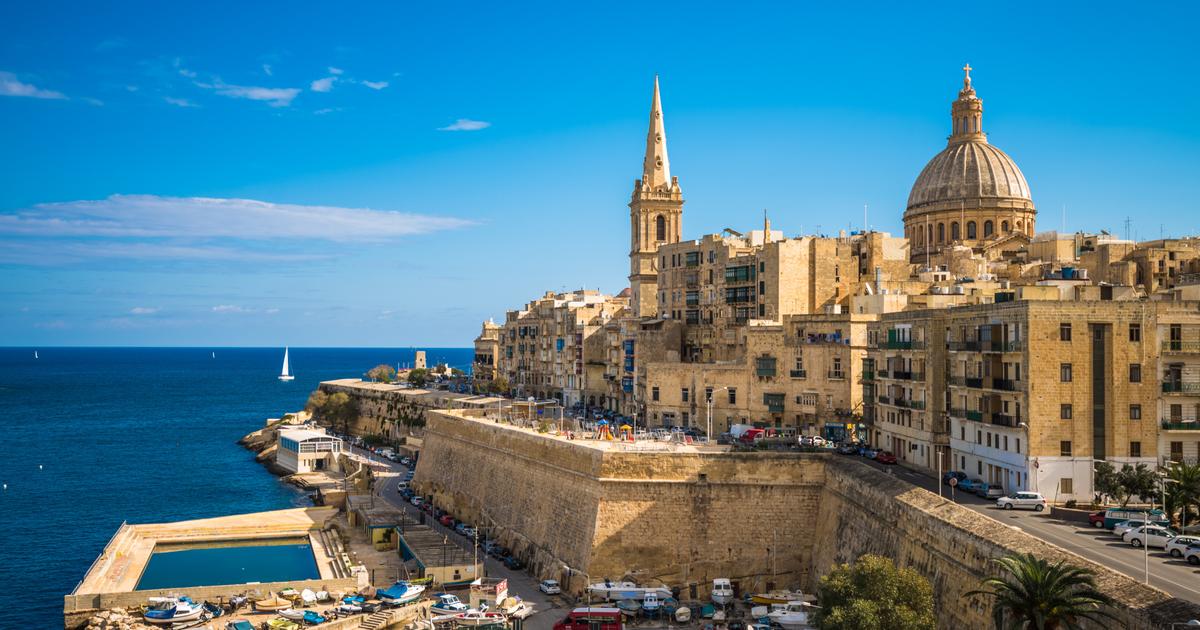Located to the south of Sicily, Malta enjoys a Mediterranean climate, with mild winters and dry, hot summers, thanks to the Sirocco of the Sahara which blows over the archipelago at the end of spring.
Malta can be visited from May to September for its pleasant temperatures and its sunshine, but the ideal period really extends from April to June, in order to avoid the hot weather and the influx of tourists.
In July and August, the thermometer easily exceeds 30°C.
Conversely, in January, it drops to 15°C and precipitation occurs from November to February.
Note that from June to September, Malta celebrates many
festas
, traditional, religious and popular festivals.
The best known, that of the Assumption, takes place on August 15th.
Read alsoTravel diary to Malta, the archipelago where order reigns
When to go to Valletta and the main island of Malta?
The smallest capital in Europe, Valletta has retained its original appearance and is home to one of the largest concentrations of monuments in the world.
Stanislas Fautré / Le Figaro Magazine
Located on the east coast of the island of Malta, Valletta can be visited from May to October, with temperatures dropping on average to 16°C in January and rising to 30°C in August.
The sea temperature, meanwhile, varies from 15°C to 25°C.
Founded in the 16th century, the capital bears witness to the history of the archipelago, which lies at the crossroads of East and West.
Entirely classified as a UNESCO World Heritage Site, Valletta is full of architectural treasures.
Lose yourself in the cobbled streets, visit the Palace of the Grand Masters and the Cathedral of Saint John of Valletta, a Baroque jewel erected by the Knights of Malta.
Around the port of Valletta, The Three Cities - Cospicua, Senglea and Vittoriosa - are fortified towns with picturesque charm.
At the end of the day,
don't miss the sunset over the capital at Upper Barrakka Gardens.
5km away, Sliema, accessible by ferry, is considered the economic capital of Malta.
This former fishing port that has become a seaside town is home to many restaurants and hotels, and offers many water activities from the end of winter.
Read alsoThe Mediterranean by boat: how to rent a sailboat for the holidays
The south of the island is best visited from May to September, with an average temperature of 16°C in February and 29°C in August.
The village of Marsaxlokk, famous for its impressive port, organizes a fish market that has become emblematic every Sunday.
Take the opportunity to go to St Peter's Pool, a natural bay ideal for swimming and basking in the sun.
Another must-see in the south, Blue Grotto is a huge natural arch that can be discovered by boat.
Not far away, the temples of Hagar Kim and Mnajdra are archaeological treasures.
Lovers of medieval history will particularly appreciate the towns of Ir-Rabat and Mdina, the former capital of Malta, with its Saint Peter's Cathedral and its Palazzo Falson.
Further north, the natural bay of Ghajn Tuffieha is very beautiful.
You can enjoy its wild beach with red-brown sand, or stroll along the limestone cliffs.
In the far north, Mellieha Bay - also known as Ghadira Bay - is the largest sandy beach in the Maltese Islands.
Its turquoise water oscillates between 21°C in June and 27°C in September, the most pleasant moment after being heated all summer.
When is the best time to go to the island of Gozo?
The island of Gozo (here the Salines dug into the rock of Xlendi) will delight lovers of nautical activities.
Between spring and autumn, you can try your hand at diving or snorkeling.
Stanislas Fautré / Le Figaro Magazine
The island of Gozo can be discovered throughout the year, with an ideal period between June (24°C on average) and September (25°C on average).
On the other hand, it is better to avoid the months of January and February because rainfall is more frequent.
It would be a shame not to take advantage of the many water activities that Gozo offers.
Snorkeling and scuba diving enthusiasts have an appointment at Blue Hole and Inland Sea.
For those who prefer seaside pleasures, the beaches of Ramla Bay, San Blas Bay and Hondoq Bay, as well as Mgarr ix-Xini, a narrow cove bordered by cliffs, are ideally discovered in May before the arrival of numerous travelers, and in September.
Read alsoWhat to see and do in Gozo, the rural island of Malta
When to go to Comino Island?
Renowned for its sublime Blue Lagoon, Comino combines sea and nature thanks to its fine sandy beaches and numerous hiking trails.
lenisecalleja
Located between Malta and Gozo, the island of Comino is the third inhabited island of the Maltese archipelago.
It is renowned for its sublime Blue Lagoon, worthy of a postcard setting.
Santa Marija Bay and San Niklaw Bay offer two equally pretty and quieter beaches.
Adventurers can visit Comino on foot, since the island is only 3.5 km2.
Note that cars are not allowed, but the already marked paths will guide you to coves, beaches, cliffs and breathtaking viewpoints over Malta.

